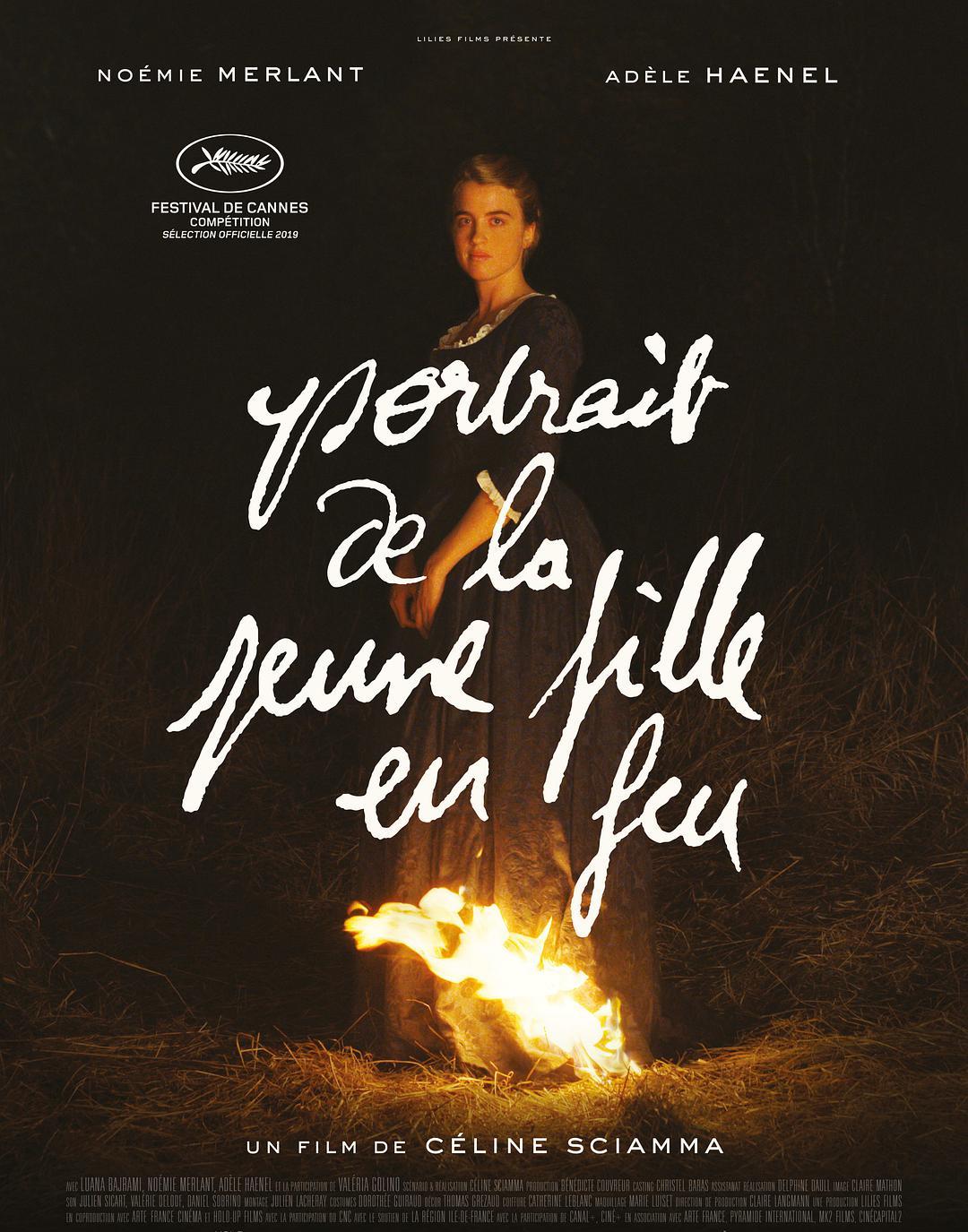Portrait of a Burning Woman is a film by French director Serene Sienma about female homosexuality. Although films depicting homosexual love were gradually lifted after the 1960s, somehow it was still gay men who dominated them. How would the story of a lesbian by a female director be different?

The story takes place in 19th-century France, when the sister of the rich woman Eloiz died off a cliff, and her mother took her back from the convent and arranged for her to marry Milan in place of her dead sister. Now her mother needed to find a painter to paint a portrait of her, which would be given to the Gentleman of Milan, and he would be satisfied with the marriage before it could be established. Marianne, a young female painter, received this commission and came to the island, because the previous painter had not succeeded, and this time Eloiz's mother asked Marianne to pretend to be the person who accompanied Eloise on a walk, observe her in the process, and paint from memory when she returned from the walk.
After listening to Mr. Dai Jinhua's interpretation, combined with my own viewing experience, I recorded three theme words - gaze, equality, and women's free will.
First, who gazes at whom
I remember that in the pilot film of Mr. Dai Jinhua's film class, the teacher mentioned that the art of film was the gaze of men on women at the beginning of its birth. Whether in the frame or behind the camera, the viewer is male and the viewed is female.
Similar to film, in the art of painting, the default observer is the painter and the observed is the model. In passive sentences, the object has no subjective will or the subjective will of the object is erased. In the film, with the help of portraits, Eloiz calls Marianne to his side and utters the famous line, "Look, if you look at me, who am I looking at?" ”
Teacher Dai also interpreted the concept of gaze from the film shooting technique, and the film makes a lot of use of visual lenses rather than counterpoint shots. The director consciously lets two people occupy the same space in the picture, showing that they look at each other, there is no subject-object distinction, which is not only an expression of love, but also shows an equality.
Second, class equality is more impressive than equality between lovers
Whether in reality or in film and television, heterosexual relationships are constantly shrouded in social structure and cultural inequality. In the story of the homosexual, we are able to get rid of this setting to observe the relationship between two equal individuals.
The film's exploration of the theme of equality is not limited to this level, but also depicts equality and mutual assistance between different classes in detail. It's also my favorite clip of the whole film, the story of the little maid.
After Eloise's mother left, Eloiz, Marianne, and the maid Sophia lived together. In the scene where they eat together in the restaurant, Eloiz is dividing the food, Marianne is pouring wine, and Sophia is sitting next to embroidering flowers. In addition, they play cards together, read books together, and help Sophia try various ways to perform abortions.
In the whole process, we did not feel that they belonged to three different classes, and also broke people's "stereotypes" of different classes. This kind of equality across classes makes people really feel the state in which all beings should be equal.
Women's free will
The three of them read together the famous story of Orpheus's search for his wife in hell. When She heard Orpheus turn back, Sophia was the first to protest, saying that "Orpheus should not turn back, he has no reason to turn back." Marianne said that Orpheus turned back with the thought of his wife, and he chose to remember, which was the poet's choice. Eloise, on the other hand, said that it was probably his wife who had told him to turn back, and she called him "turn back" behind his back.
In the traditional story, women are the weak and the rescued, and they can only accept the arrangement of fate and wait for a man to make a choice for them. In the tragic story of Orpheus, the same is commonly interpreted. But Eloiz's interpretation opens us to another possibility, turning it into a story of women's own choices and destinies.
In this film, although Eloiz's marriage is a common marriage between nobles, the decision is still in the hands of the Milanese gentleman she does not know, which is why she should paint a portrait. Only when the Gentleman of Milan saw the painting and was satisfied with her, could the marriage be established. At that time, she could not resist, but the book in her hand at the end of the painting revealed the corner of 28 pages, which was not only a text message she transmitted to her lover, but also an expression and choice of her own thoughts.
While Marianne was painting Eloise, Eloiz asked Marianne if she had ever painted a nude model. Marianne said she would paint women, and it was not allowed to paint men. Why? "In order to block our way to creating immortal art, without understanding the male body structure, we cannot get involved in the main field of art."
This is again the usual trick of the patriarchal society against women. From ancient times to the present, women have had little access to education, resulting in women being unable to speak up for themselves. The image of women handed down throughout history has been left to men to orchestrate for various purposes. Today, more women have the right to education and have the opportunity to speak up, may the women at the bonfire party use the Acapella chant "can not escape" to become a masterpiece, may women always have the opportunity and freedom of independent choice.